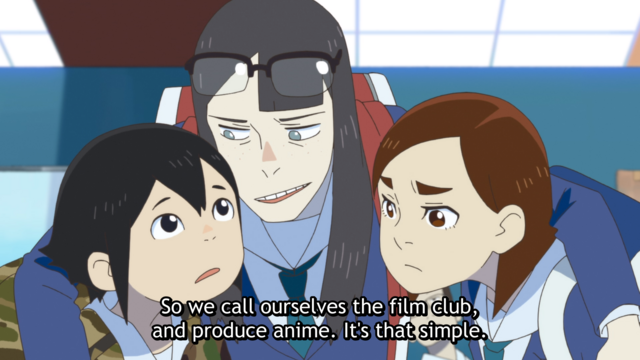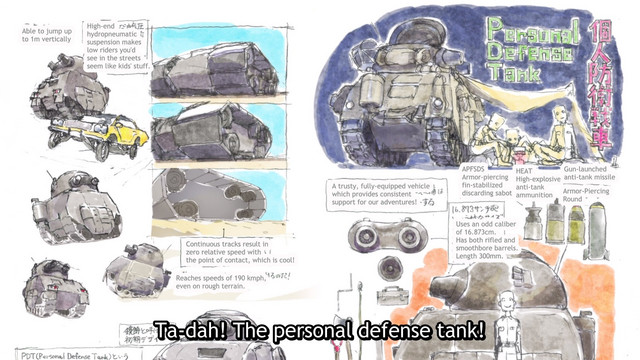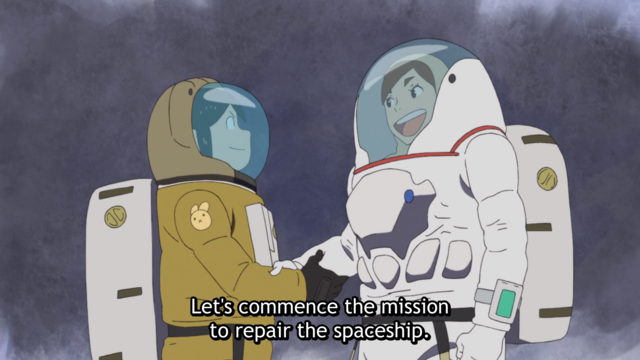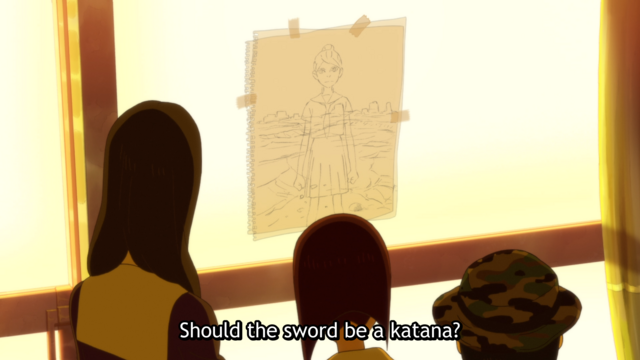Hello everyone, and welcome back to Why It Works! As the winter season chugs along, I continue to be dazzled by the beautiful, fanciful Keep Your Hands Off Eizouken! As a story about three girls attempting to produce their own anime, Eizouken isn’t just creative in terms of its execution—it’s a story about creativity, a story that celebrates all the messy intricacies of the storytelling process. Though its episodes feel light and breezy, they are absolutely packed with insights regarding the true nature of the creative process, and how we assemble loose scraps of ideas into a finished narrative. Today on Why It Works, I’d like to dig into Eizouken’s insights, and reveal how it both illustrates and embodies the creative process!

As it’s focused on teenage girls who haven’t actually created any finished works yet, Eizouken starts us on the ground floor in terms of both artistic inspiration and creative collaboration. Neither Asakusa nor Mizusaki have specific stories they “need” to tell, a work inside them waiting to get out—they’re just young and passionate and easily inspired, with specific interests in very different aspects of animation.
Asakusa and Mizusaki’s passion naturally pushes back against the idea that artistic works, and particularly collaborative ones, exist in some “perfect” form. Stories are negotiations and compromises, magician’s tricks and sequences of serendipity. Turning ideas into a story isn’t a process where you can calculate and solve for a correct answer. It’s a combination of inspiration, personal passion, pragmatism, and craft fundamentals, and to the people who’ve created them, any finished story will seem riddled with the compromises, setbacks, and stopgap solutions of the journey.

The exuberant Asakusa demonstrates this fact consistently, as her passion for mechanical design is far greater than her respect for narrative consistency or dramatic structure. In this way, she’s actually illustrating the true philosophy of early storytelling: don’t be bound by logic or convention, let your passion take you to unexpected places. When she must decide between the fantasy image she desires and the practical mechanics of space travel, she goes with the fantasy—after all, this is her story, and you can always pull together a practical explanation after the fact.
From an audience’s perspective, it can be easy to think of the fantasy worlds we experience as real places, places with fundamental, logical rules that must be obeyed. That feeling itself is a result of consistent worldbuilding—but from the artist’s perspective, the “stable logic” of an invented world is like a town constructed of stable-looking facades held up by lumber and string. The important thing is the audience experience, that the story feels grounded, and resonates with their own life experiences. And that creating that effect comes down to a lot more than just consistent worldbuilding.

You can see Asakusa embody this philosophy in her description of a spaceship’s bow. Though spacefaring ships don’t need wave-breaking bows for any practical reason, that visual feature helps them “feel” like ships. The audience's emotional resonance is the key—and once a compelling, resonant design is established, it’s trivially easy to go back and say “oh, that’s where the radar goes.” As viewers, we have a tendency to see things that look convincing to us, and assume that's because they're "logically" designed. Storytellers must embrace the fact that what an audience will parse as "logical" or "natural" is actually a result of a million internalized assumptions about how things work or feel, and manipulate those emotional assumptions to their own dramatic ends.
The contrast between Asakusa and Mizusaki also neatly illustrates the artistic complexity of storytelling generally, and anime specifically. Though they are both passionate about anime, the things about anime that inspire them are completely different. On Asakusa’s side, it’s all about concept design and worldbuilding—fanciful places and dazzling machines, inventions that favor her passion for nitty-gritty mechanical detail. On Mizusaki’s side, it’s all about the character movements—and not just character movements in general, but specifically the kind of nuanced, true-to-life character acting often found in slice of life or character dramas.

Neither of their passions are more valid than the other, but when they come together, the works they create will naturally reflect both their interests. As I said, no creative work is a perfect articulation of any single, flawless idea—it is an accumulation of many discordant sub-ideas, and when a work is a collaboration, all of the distinct passions of its various creators will come through in the final product.
Of course, anime production doesn’t exist in a fanciful creative vacuum—anime is a business, and the pragmatic realities of that business are also cleverly explored, through the protests of Asakusa and Mizusaki’s long-suffering friend Kanamori. But Kanamori’s contributions to Eizouken’s exploration of storytelling will have to wait for next week, when I return to finish up this discussion. For now, I hope you’re enjoying exploring the creative process along with Eizouken, and please let me know all your own favorite Eizouken moments in the comments!
--------------
Nick Creamer has been writing about cartoons for too many years now, and is always ready to cry about Madoka. You can find more of his work at his blog Wrong Every Time, or follow him on Twitter.
Do you love writing? Do you love anime? If you have an idea for a features story, pitch it to Crunchyroll Features!
Source: Latest in Anime News by Crunchyroll!


Comments
Post a Comment